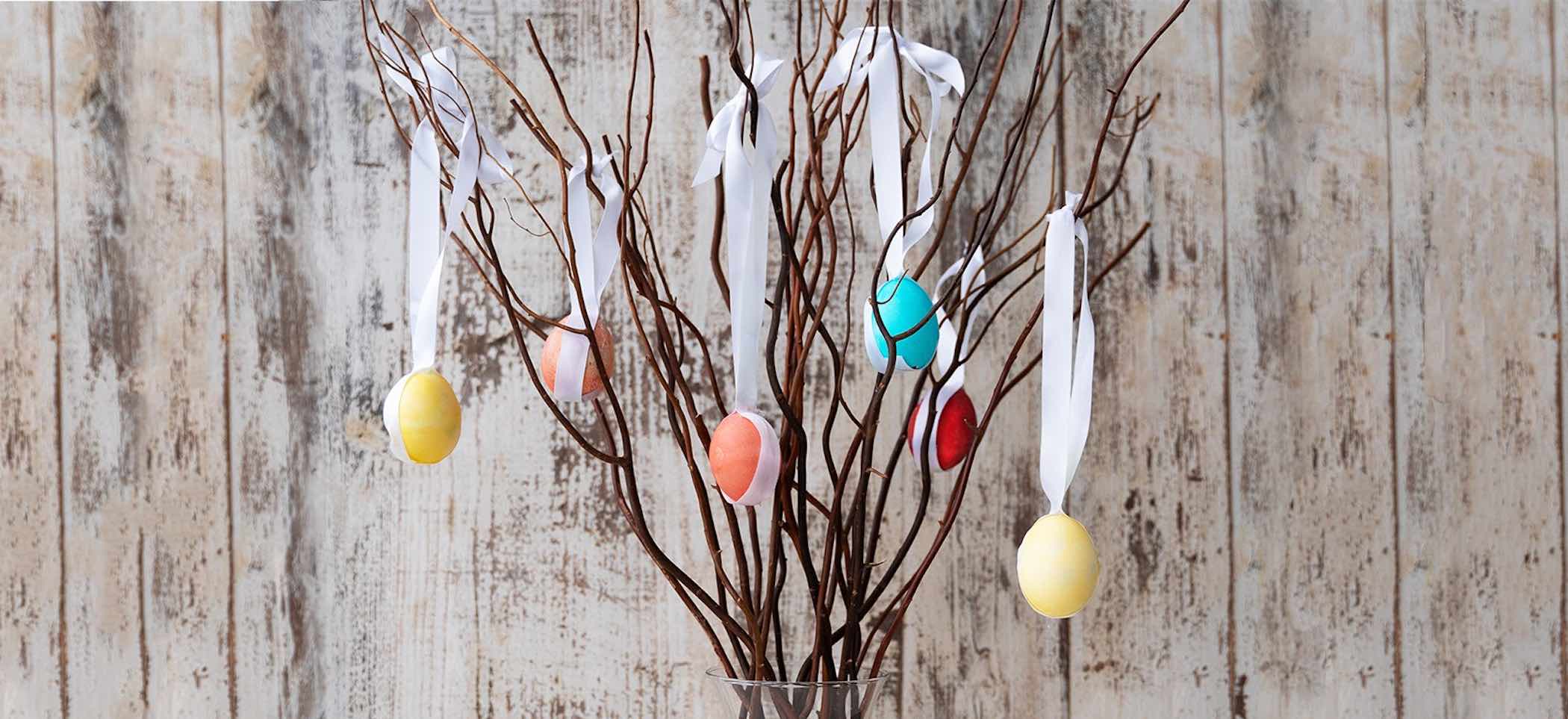

-
9 Ingredients
Craft the perfect Easter egg tree for your Easter tablescape
Ingredients and Directions
Directions
DRY empty decorated eggshells completely.
CUT 12 15” strips of ribbon. WRAP and GLUE a piece of ribbon around each egg. Starting at the smaller end of the egg, GLUE in a straight line down the egg around the larger end and COMPLETE back at the smaller end where you started, allowing 5” of the ribbon at the ends to TIE a bow at the top of the egg. This will become the loop to attach each egg to the tree branch. PLACE ribboned eggs to the side. LET the glue dry.
REMOVE any leaves from the tree branch. PLACE a piece of floral clay on the bottom of the container and PLACE the branches in the clay to tightly secure.
ADD gravel, pebbles or marbles to cover the floral clay.
HANG the decorated eggs on branches to complete the Easter Tree!
Ingredients
- 12 empty EGGSHELLS, decorated
- 12 strips of ribbon, 15” each and ¼ - ½” wide
- Scissors
- Craft glue or hot glue gun
- Small to medium size sturdy tree branches
- Container for branches (vase or large Mason jar)
- Floral clay/foam or styrofoam (optional)
- Gravel, pebbles or marbles
- Bowl
Tips
To personalize your Easter Tree, try adding family photos! Punch a hole in a small family picture, pull the ribbon through the photo and tie in a bow at the end. Place ribboned photos throughout the tree branches.
- To empty the egg shells:
Directions
Wash the egg, using water warmer than the egg, and dry it. With a sterilized long needle or small, sharp skewer, prick a small hole in the small end of the egg and a large hole in the large end. Carefully chip away bits of shell around the large hole until it’s big enough to accommodate the tip of a baster. Stick the needle or skewer into the yolk to break it.
Either shake the egg large-end down over a cup or bowl until the contents come out or use a baster to push out the contents. Press the bulb of the baster to push air into the egg, letting the contents fall into the cup. If the contents don’t come out easily, insert the needle again and move it around to be sure both the shell membranes and yolk are broken. Rinse the empty shell under cool running water and stand it on end to drain and dry. Be careful when decorating emptied shells – they’re quite fragile.
Use contents immediately in a recipe that includes mixed yolks and whites and calls for thorough cooking. Most baked dishes – such as casseroles, custards, quiches, cakes or breads – are good uses for eggs emptied from their shells.
To ensure food safety, eggs should be cooked until both the yolk and the white are firm. Consuming raw or undercooked eggs may increase your risk of foodborne illness, especially for those with certain medical conditions. For recipes that call for eggs that are raw or undercooked when the dish is served, use either pasteurized shell eggs that have been treated to destroy Salmonella, or use pasteurized egg products.

